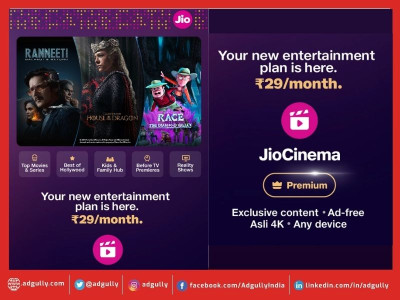How India is leading in-app transactions in APAC
Kenneth Pao, Executive Managing Director, Asia-Pacific, Criteo, writes about how the Asia-Pacific region is en-route to becoming an mCommerce leader.
Home to 46 countries, the APAC region stands at the forefront of mobile internet usage growth and payment innovation. By 2025, not only will the penetration rate of mobile internet usage increase by 17%, the number of mobile internet users will also increase by 42.1% to reach 2.7 billion users[1] (that’s 36% of the world’s population!)
Several key markets within the region are already forging full steam ahead in their mCommerce ventures:
- Singapore and Taiwan areamong the top 10 countries globally for having the highest mCommerce penetration rates
- India stands out from other APAC countries for its high number of app installs, with in-app transactions accounting for 82.4% of all completed mCommerce transactions
- Indonesia is leading in Southeast Asia as the economy with the fastest mCommerce growth of 39%
- Vietnam is the fastest-growing market for mobile payments and has experienced a 24% increase in mobile payments between 2018 and 2019
APAC markets are experiencing rising income levels and improving cellular infrastructure
The middle class is expanding in APAC, with a total of 50 million new customers joining the ranks of the middle class in fast-maturing mobile economies like Indonesia, Thailand and Vietnam. This will contribute to the region’s US$300 billion middle class disposable income. In addition, China is experiencing an explosion in its upper-middle-class population, which is forecast to rise at a compound annual growth rate of 28% from 2018 to 2025.
At the same time, the region’s cellular infrastructure is undergoing major developments. South Korea commercially launched its 5G network in April this year and developed countries in the region such as Australia and Japan, are seeking to become global 5G leaders as well. With the ubiquity of 5G in the near future and continuous improvement of existing 4G network infrastructure in developing countries like India, Myanmar and Vietnam, owning a mobile phone has become convenientfor locals.
Considering the rising income levels and advancing cellular infrastructure, the app install market in APAC continues to experience rapid expansion. APAC is forecasted to contribute up to $64 billion growth in the global app install market, with ad spend increasing by 70% by 2020.
Governments in APAC are open and supportive towards digitalisation and innovation
Governments within APAC are forward-looking and open toward driving digital transformation initiatives in their economies. China currently leads the pack and nations are innovating to become tech powerhouses of their own.
Attitudes towards the adoption and trust in technology are favourable
Large economies like China, India and Southeast Asia have digitally forward populations that are open to online shopping with their mobile devices (mCommerce). A combination of these economies makes up almost half of the population (44.8%), which demonstrates the significant impact the region could have on the world’s mCommerce landscape.
Most interestingly, consumers in APAC hold more favourable sentiments and behaviour towards mCommerce and technology compared to other regions. For example, 34% of people globally actively adopt mCommerce and use their mobile devices to compare prices of products. In Asia, this percentage rises to 45%. At the same time, 27% of people globally are willing to share their data in exchange for benefits or rewards. This is in contrast to China, where 38% are willing to make the same transaction due to their strong trust and confidence in technology.
Window-shopping via mobile is unique to the region
APAC consumers are open to exploring retail apps and are actively registering their accounts. However, they do not commit to making purchases as easily. Instead, they ‘window shop’ on their mobile phones and demand for user-friendly shopping experiences.
To succeed in mCommerce, retailers should first consider the full-funnel approach when coming up with appropriate marketing activities to convert prospects and retain customers. Taking note of both the upper funnel (awareness and consideration) and lower-funnel (conversion) goals, retailers must ensure that the right kind of ad is shown to the right customer at the right time. Secondly, retailers should come up with novel, personalised ways to encourage prospects to make purchases. Possibilities are limitless with Augmented Reality (AR), Virtual Reality (VR) and short-form videos.
Conclusion
APAC is the region to watch when it comes to mCommerce with governments and consumers adopting positive and forward-looking mindsets towards new innovations. Consumers exhibit unique mobile shopping behaviours that require retailers to adapt and keep up through the use of emerging technologies to increase sales.
Working with some of the largest brands and eCommerce businesses in APAC, I am excited to see what exciting changes the region brings and how mCommerce will continue to develop.


















Share
Facebook
YouTube
Tweet
Twitter
LinkedIn